Mouthwatering Chicken Cordon Bleu at home is easier and healthier by making and baking it without frying. Stuff a chicken breast with ham and cheese with a Parmesan Panko breadcrumb coating. You can have this classic dish at home.
Ingredients
Chicken—boneless skinless chicken breasts
Stuffing—ham. Swiss cheese, optional green onion
Base coat—flour, onion powder, garlic powder, salt, black pepper
Egg
Breading coat—panko bread crumbs, Parmesan cheese, olive oil
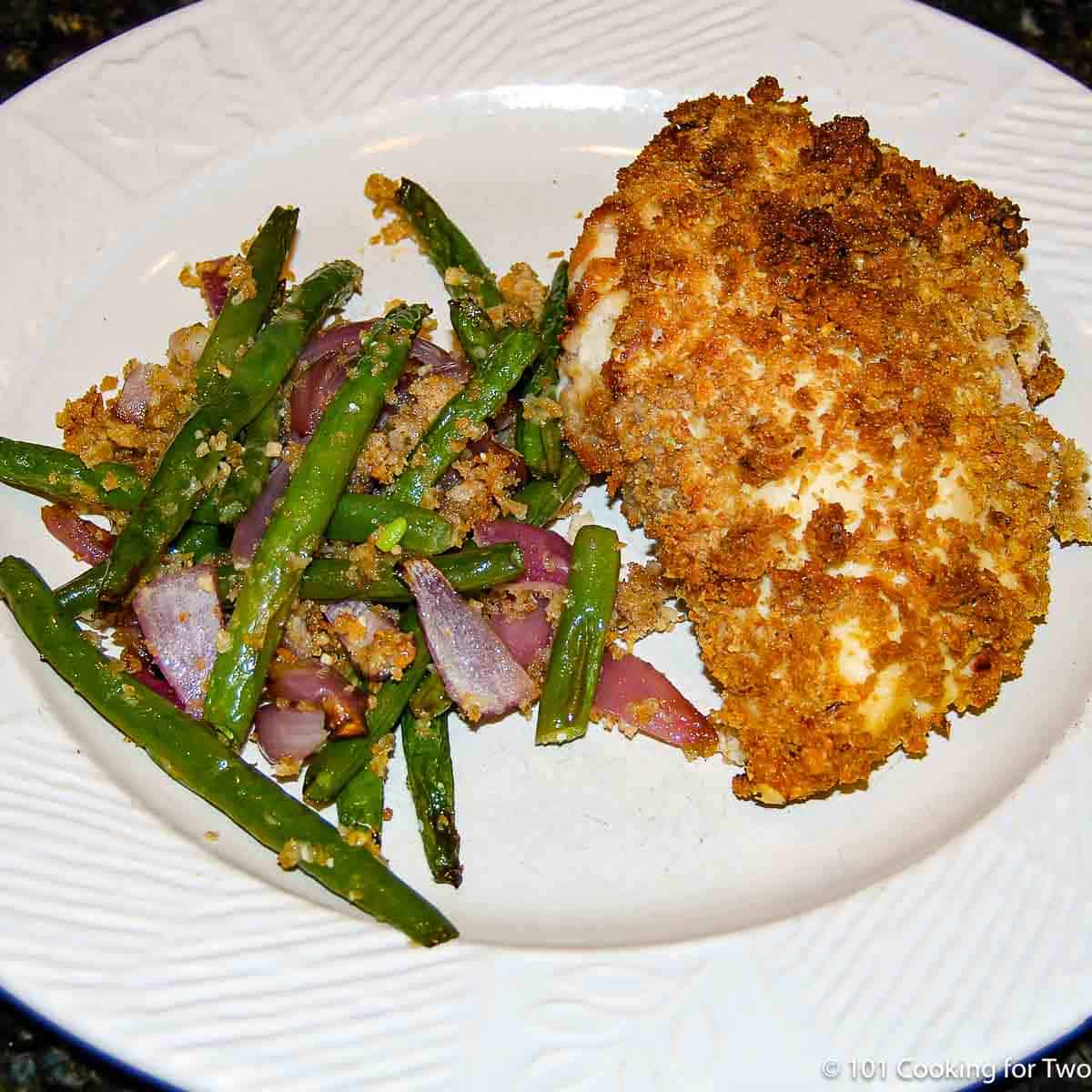
Jump To (scroll for more)

A "cordon bleu" is a thin, usually pounded meat wrapped around a cheese filling. It is then traditionally fried. The French term "cordon bleu" is translated as "blue ribbon." The dish first appeared in the 1940s.
I had done a chicken cordon bleu with a pounded-out chicken breast. It did work but got overly complicated. But this "stuffed" oven-baked method works better by not overcooking the coating to get the chicken to a safe 165°.
👨🍳How to Make Chicken Cordon Bleu—Step-by-Step Photo Instructions
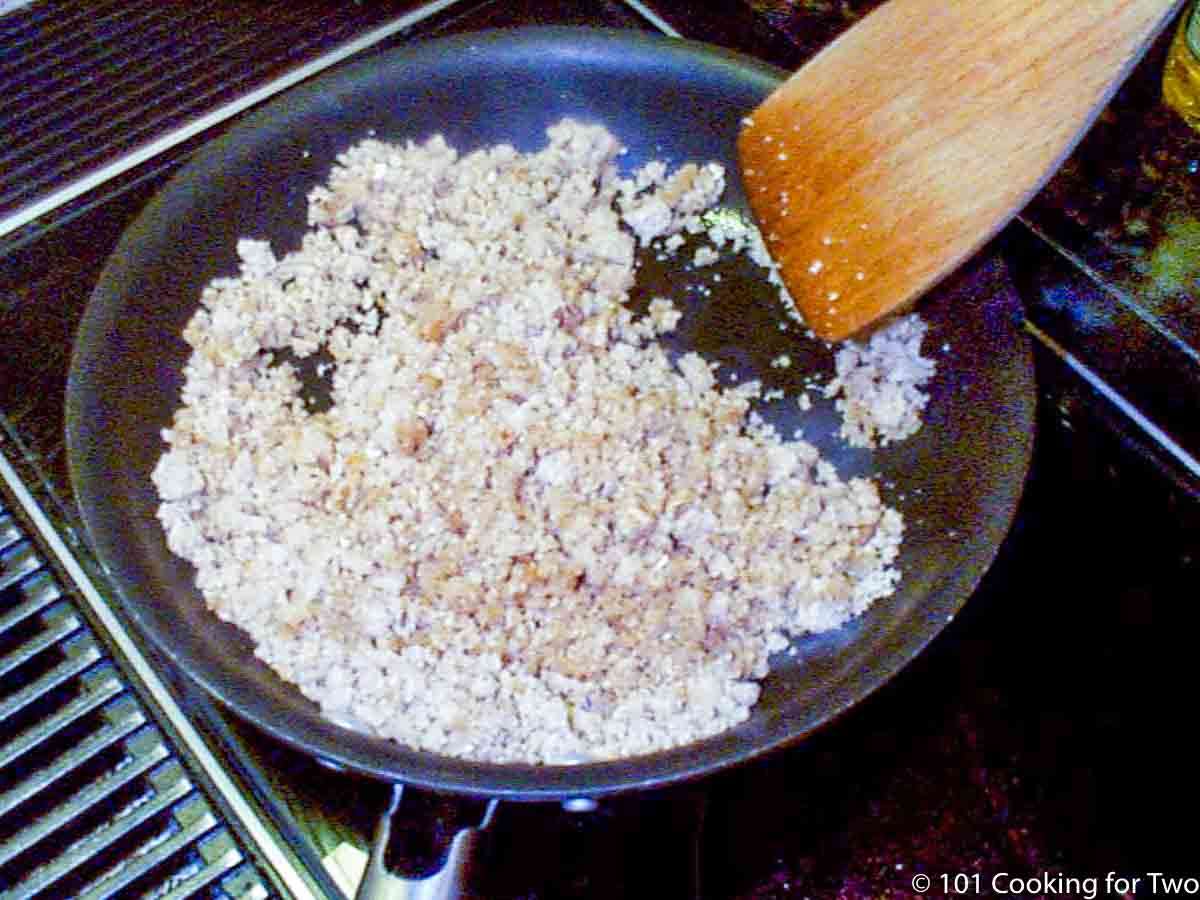
1. Brown Panko bread crums
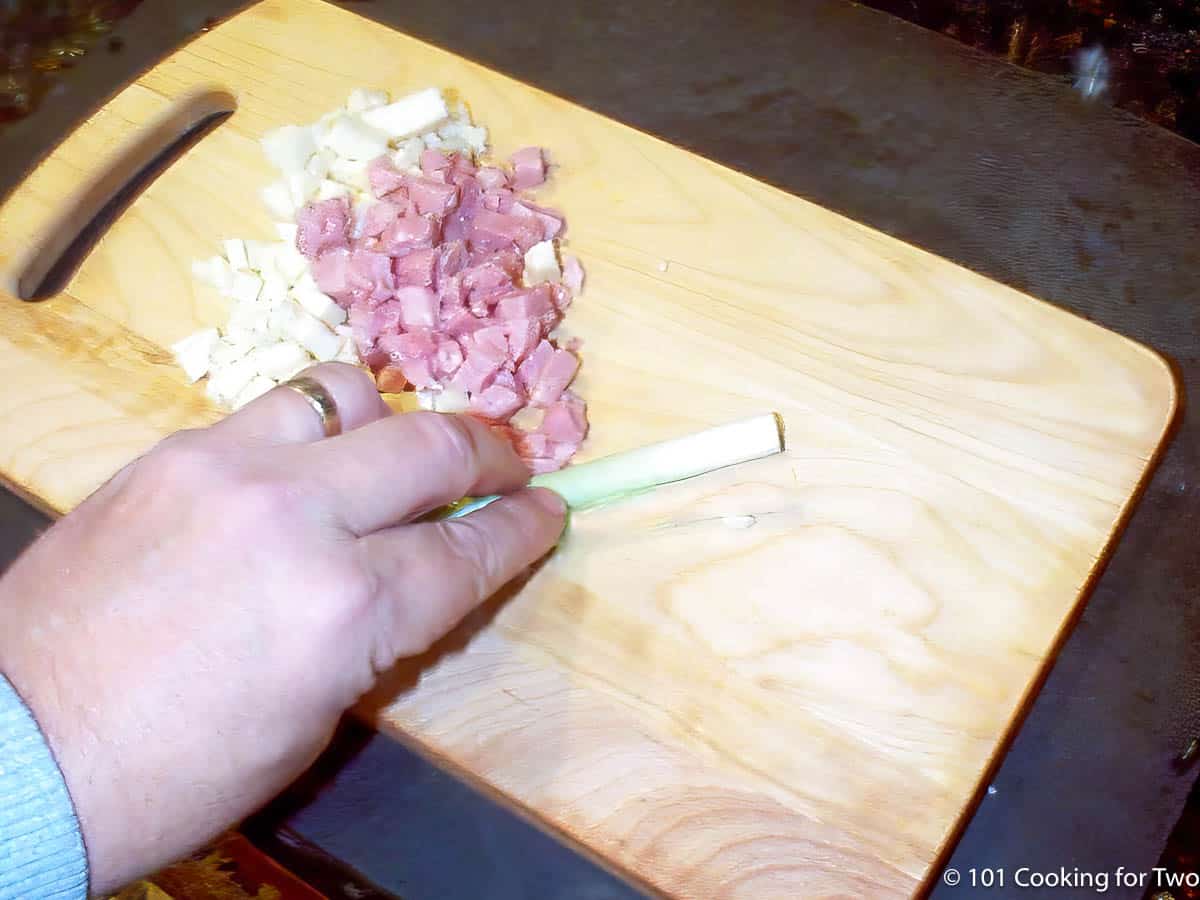
2. Dice cheese and ham. Optional add a green onion.
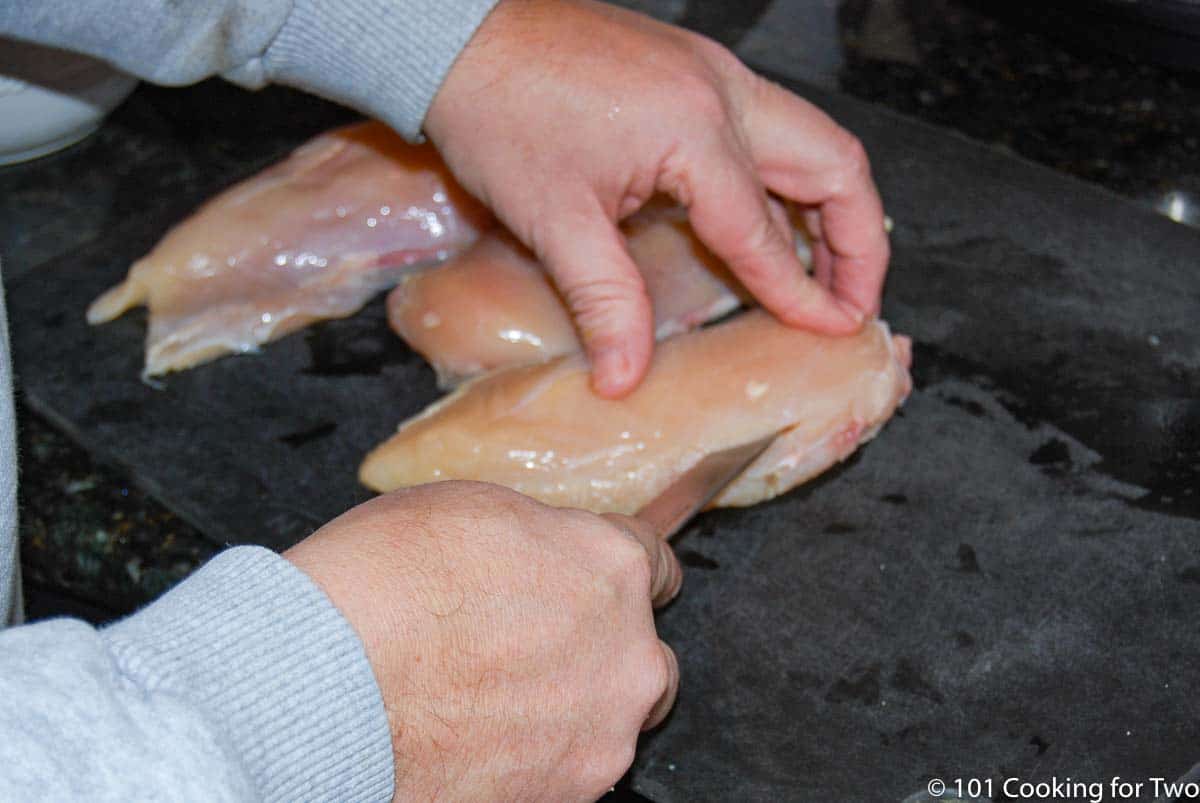
3. Create a pocket in the chicken breast.
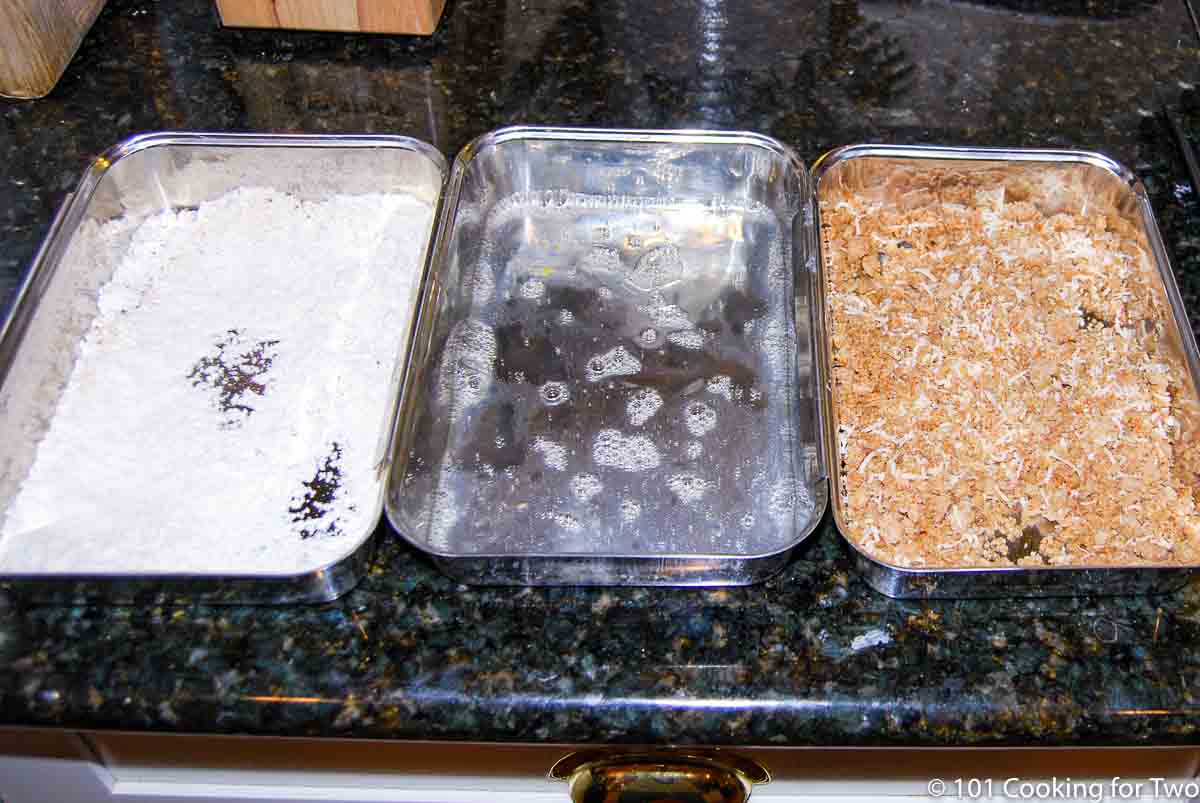
4. Create shallow pans with coating ingredients.
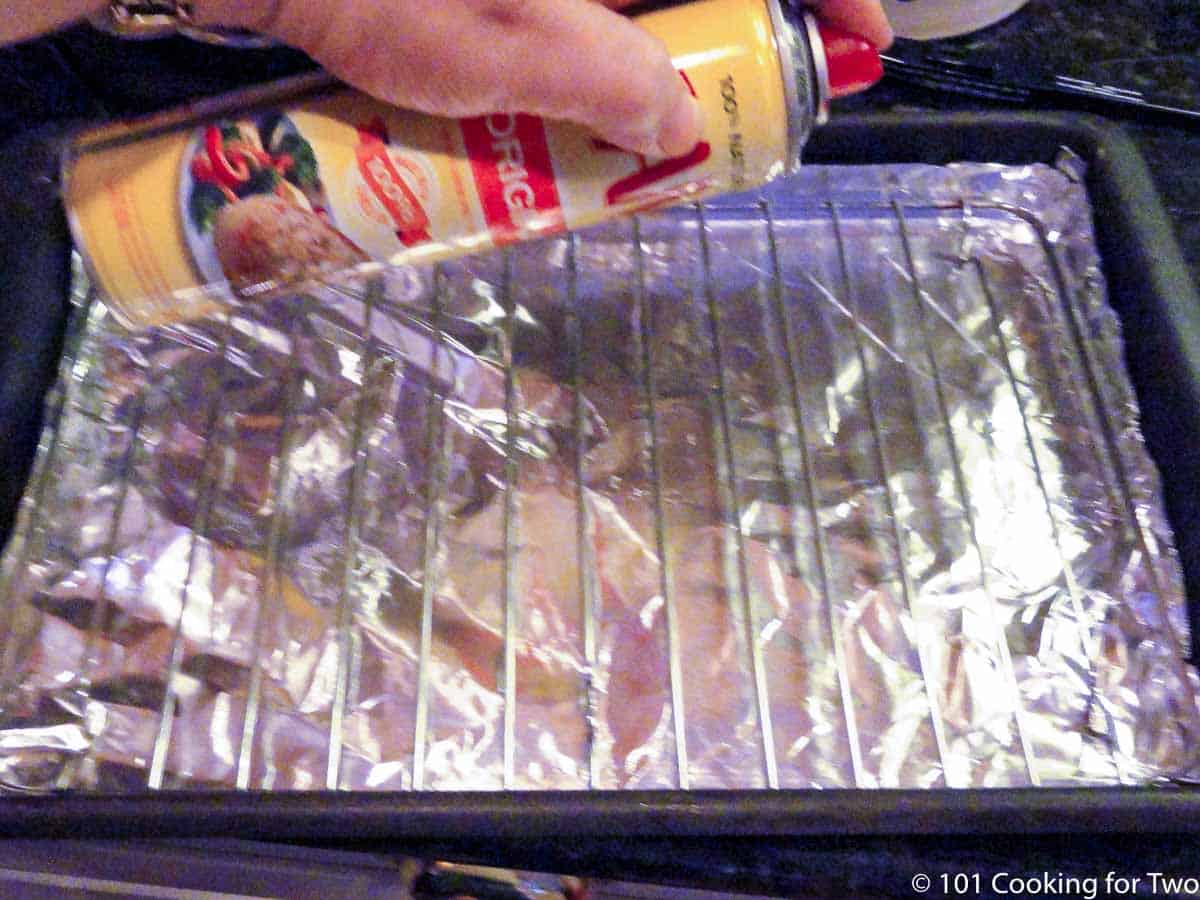
5. Line the pan with aluminum foil and add a rack, then spray of PAM.
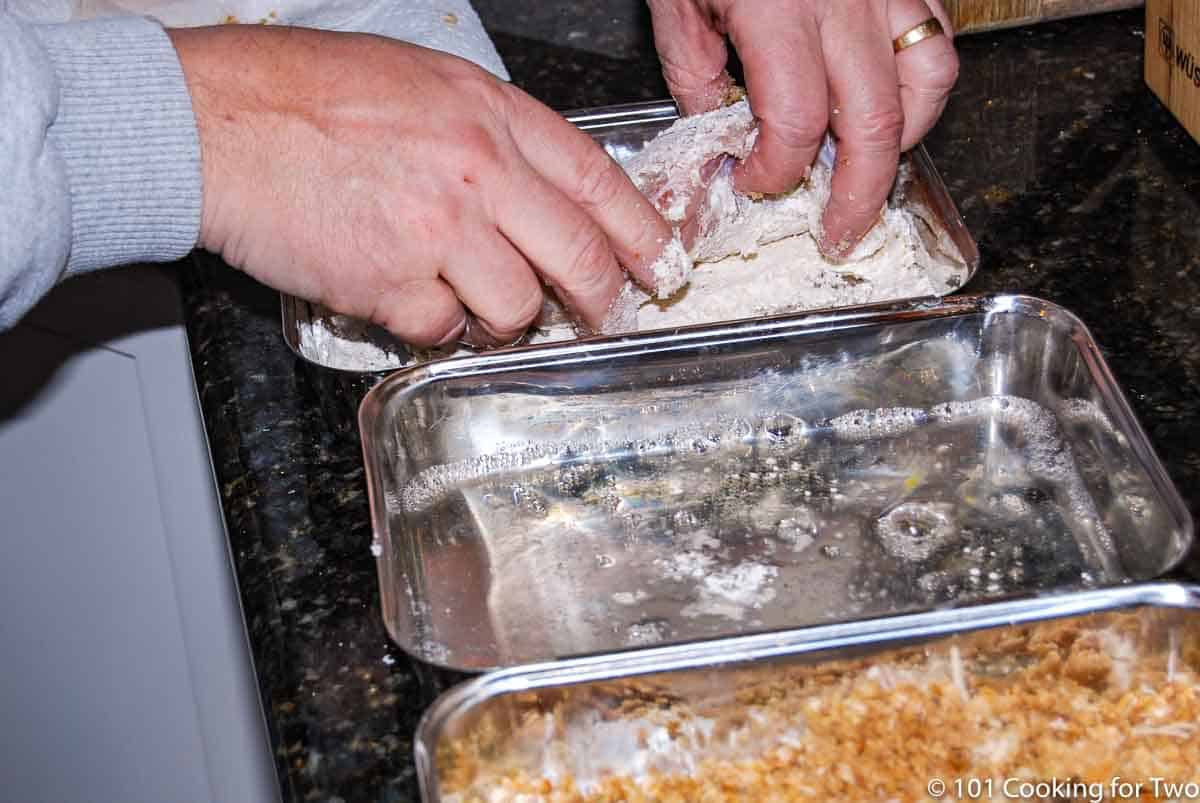
6. Coat with spicy flour, egg white, then browned breadcrumbs and Parmesan.
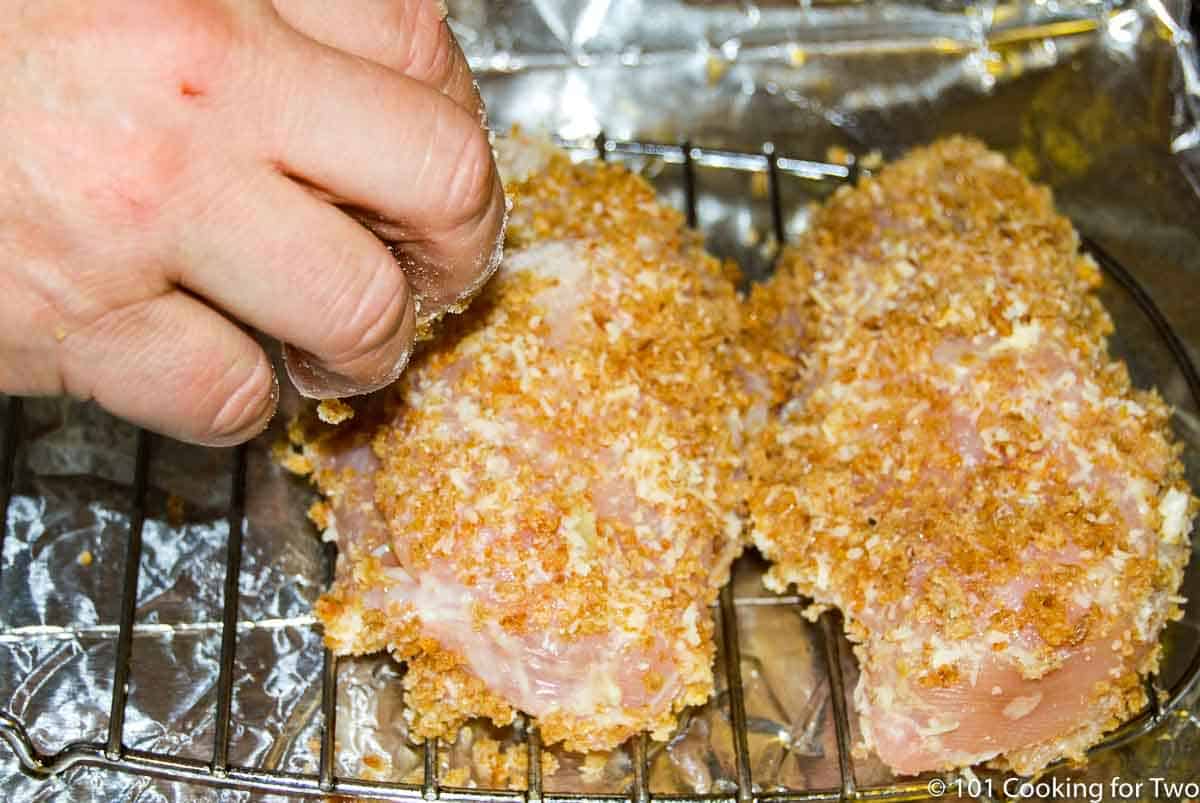
7. Place on a rack.
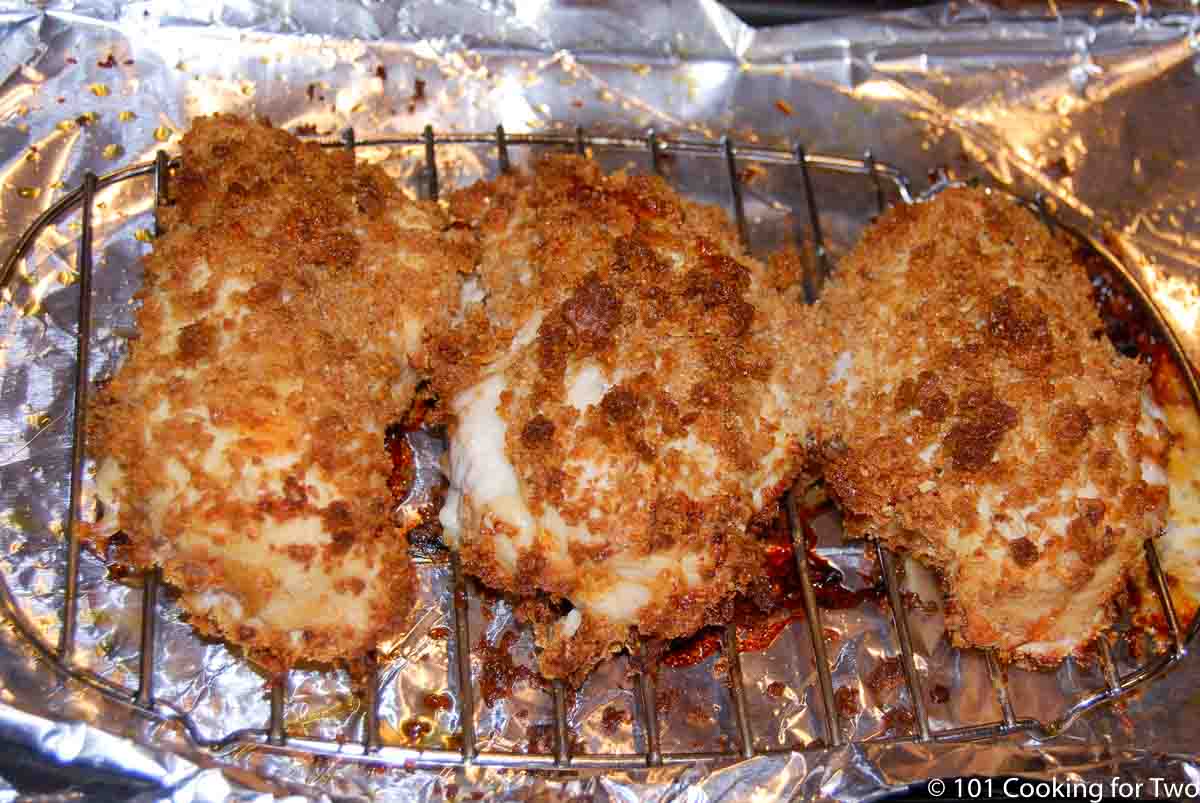
8. Bake at 400° convection or 425° conventional until 165° internal temperature—about 40-45 minutes.
For more details, keep reading. See the Recipe Card below for complete instructions and to print.
🐓What chicken to use
I suggest medium to larger size skinless boneless chicken breasts. You can use smaller (8 oz or less), but they are hard to find and stuff without going through the side.
If you do the flattened-out chicken breast, you should use slices of ham and cheese, but diced works better for this pocket method.
How to serve
Serve with Julia Child's French Bread, Parmesan Roasted Cauliflower, Roasted Asparagus with Parmesan or Baked Parmesan Green Beans.
Great Italian Recipes
Check out other easy Italian recipes, like Chicken Parmesan Soup, Italian Grilled Chicken Breasts, Easy Chicken Parmesan, Chicken Baked Ziti, and Lower Fat Spicy Chicken Alfredo.
How to make chicken cordon bleu ahead
Wrap them airtight and refrigerate for 2-3 days or freeze for 3 months. If frozen, thaw completely before cooking and cook to 165° internal temperature.
Storage and reheating leftovers
Store leftovers in an airtight container. Refrigerate for 2-3 days or freeze for 3 months.
To reheat leftovers, thaw them if frozen and cook them in the oven or air fryer to 165° internal temperature. You can reheat it in a microwave, but the breading will not be crisp, and the texture suffer.
❓FAQs
Use a knife to make the slit in the chicken breast. Do it on the breast's thicker side, 1 to 1 ½ inches long, and initially 1 inch deep. Then, I like to use my finger to extend the pocket. You can use the knife, but it tends to go too far.
The breading in all recipes sticks better if the meat is very dry before the flour coats. Also, allowing the coating to set for 5 to 10 minutes before cooking will help it sit up and stick better.
Like all chicken and poultry recipes, the meat must reach 165° to be served safely according to USDA recommendations.

👨🍳Recipe
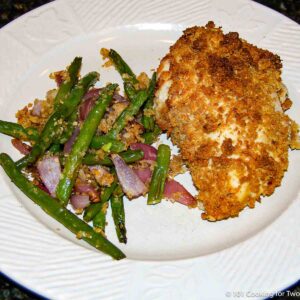
Baked Chicken Cordon Bleu
Save this recipe to your inbox for later!
You may recieve the email without subscribing if you wish, but the subscription is convienent and has an easy one-ckick unsubscribe.
Ingredients
- 4 boneless skinless chicken breasts
- 2 oz ham - diced
- 2 oz Swiss cheese - diced
- 1 green onion - optional
Tray #1
- ½ cup flour
- ½ teaspoon onion powder
- ½ teaspoon garlic powder
- ½ teaspoon salt
- ¼ teaspoon pepper
Tray #2
- 1 egg - whip with some water
Tray #3
- 1 cup panko bread crumbs
- 1 teaspoon olive oil - to brown bread crumbs
- ¼ cup Parmesan cheese - shredded
Instructions
- Preheat oven to 400° convection or 425° conventional. Heat a medium skillet over medium heat with 1 tablespoon olive oil. Add 1 cup of panko bread crumbs and brown.
- Dice 2 oz. Swiss cheese and 2 oz. Ham together in ⅛-1/4 inch pieces. Toss together. Add a minced green onion—optional, and do not add if storing.
- Pat the chicken breasts dry with paper towels. Trim the fat. Lay a breast on a cutting board. Cut a slit about 1 ½ inches long and deep into the thick side of the breast. With a finger, expand the pocket to extend into most of the breast. BE CAREFUL not to put a hole in your pocket. Stuff the chicken breasts. You could use a toothpick to close the pocket if needed.
- Make a dredge line. Mix ½ cup flour, ½ teaspoon onion powder, ½ teaspoon garlic powder, ½ teaspoon salt, and ¼ teaspoon pepper. In a second pan/bowl, one egg and 1 tablespoon of water and whip with a fork. In a third pan/bowl, place the browned breadcrumbs. Add ¼ cup shredded Parmesan cheese to the breadcrumbs.
- Line the baking pan with aluminum foil and add a rack if you have one. Please give it a heavy spray of PAM.
- Dry the breasts well. Dip in the flour mixture. Coat both sides and shake off the excess. Dip in the egg wash, and shake off excess. Then the breadcrumbs.
- Place on a rack. Add a few more breadcrumbs if there are bald spots.
- Place on the center rack of the preheated oven. Cook until 165° internal temperature. It takes about 40-45 minutes.
Recipe Notes
Pro Tips:
- You can also flatten the chicken roll it if you want.
- I used three large breasts in the pictures, but I wrote this for 4.
- I like the touch of onion, but it is not traditional and omit it if you want. The onion will dominate the taste if stored, so only use it for fresh cooking and serving.
- Use your finger to extend the cut, not the knife.
- The breading sticks better if you are sure to dry the breasts well, and after coating, let them sit for 5-10 minutes before cooking or freezing.
- Good refrigerated for 3 to 4 days. Should freeze well either before or after cooking.
Your Own Private Notes
To adjust the recipe size:
You may adjust the number of servings in this recipe card under servings. This does the math for the ingredients for you. BUT it does NOT adjust the text of the instructions. So you need to do that yourself.
Nutrition Estimate
© 101 Cooking for Two, LLC. All content and photographs are copyright protected by us or our vendors. While we appreciate your sharing our recipes, please realize copying, pasting, or duplicating full recipes to any social media, website, or electronic/printed media is strictly prohibited and a violation of our copyrights.
Editor's Note: This recipe was originally published on January 13, 2010, only two weeks into this blog's life. It was updated with expanded options, refreshed photos, and a table of contents to help navigation.


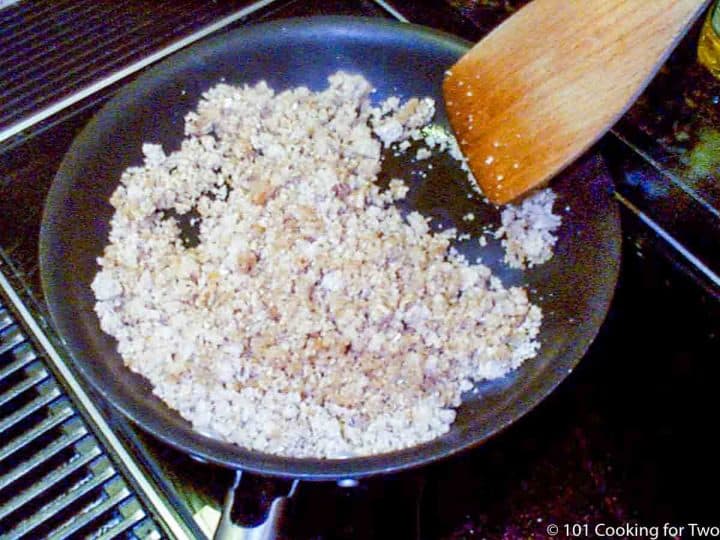
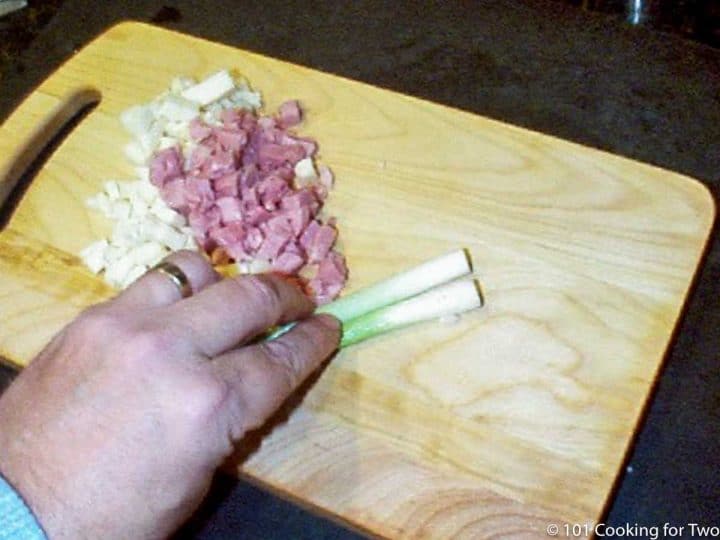
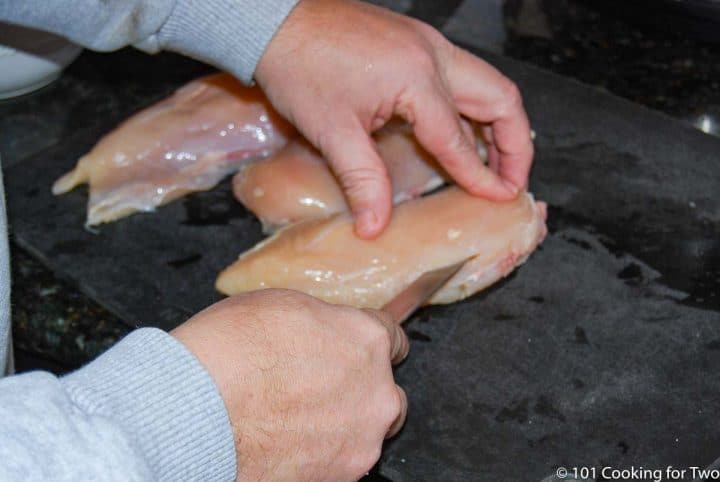
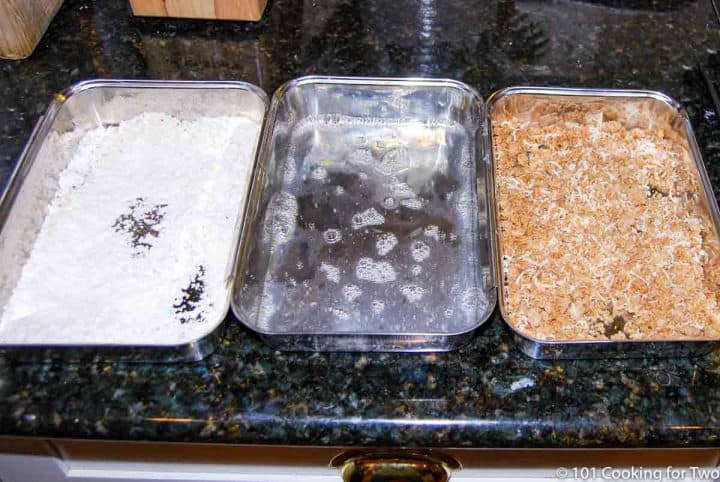
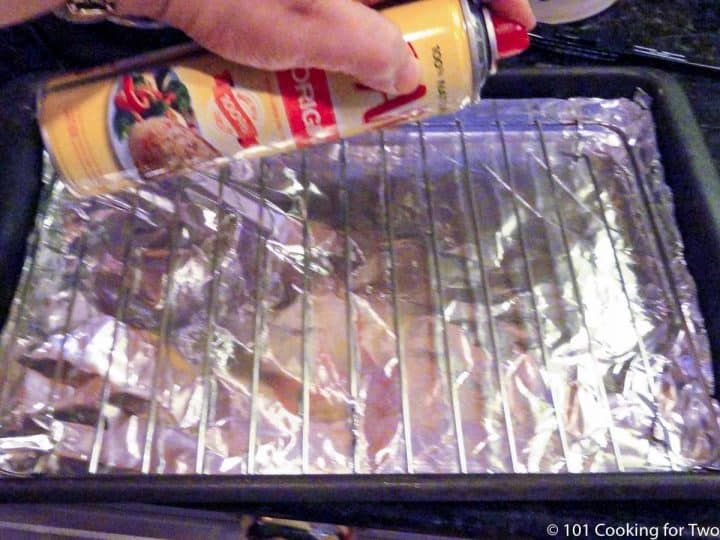
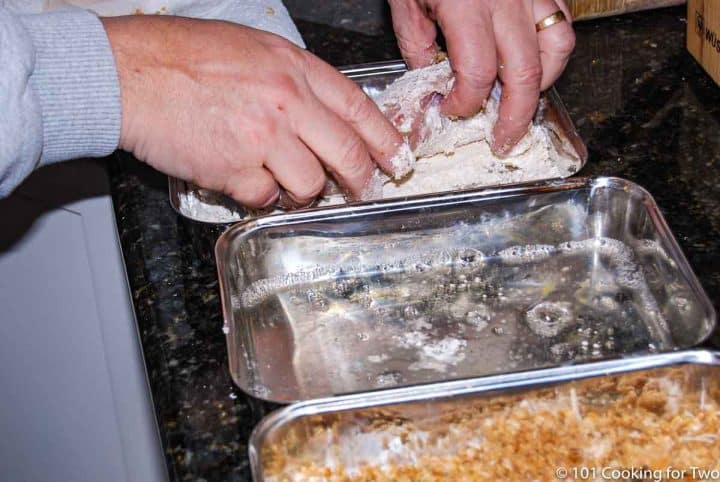
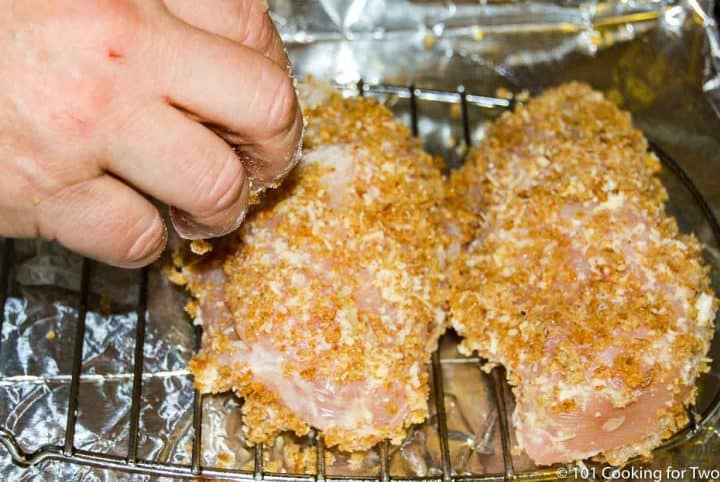
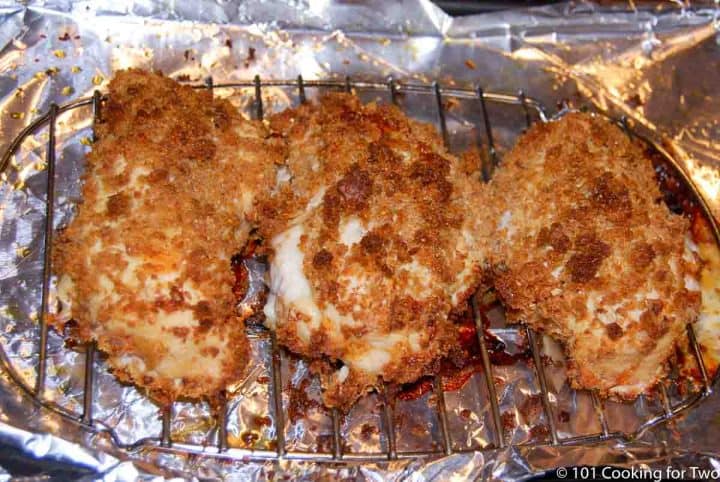
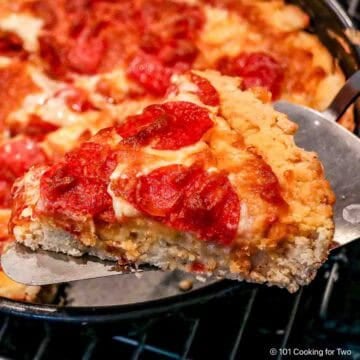
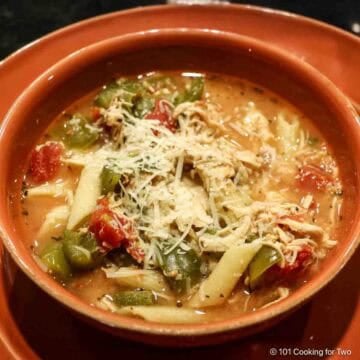
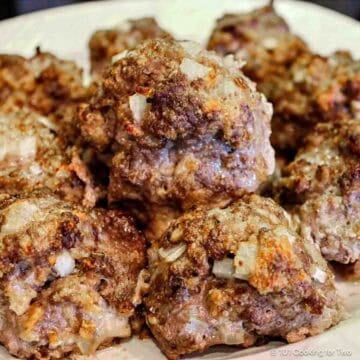
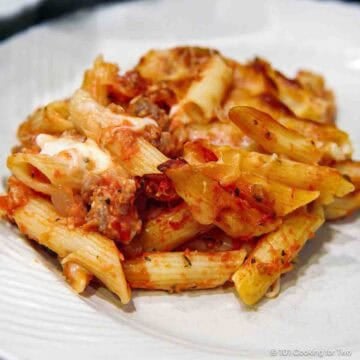
Leave a comment or ask a question. All comments are held for moderation due to spam issues.